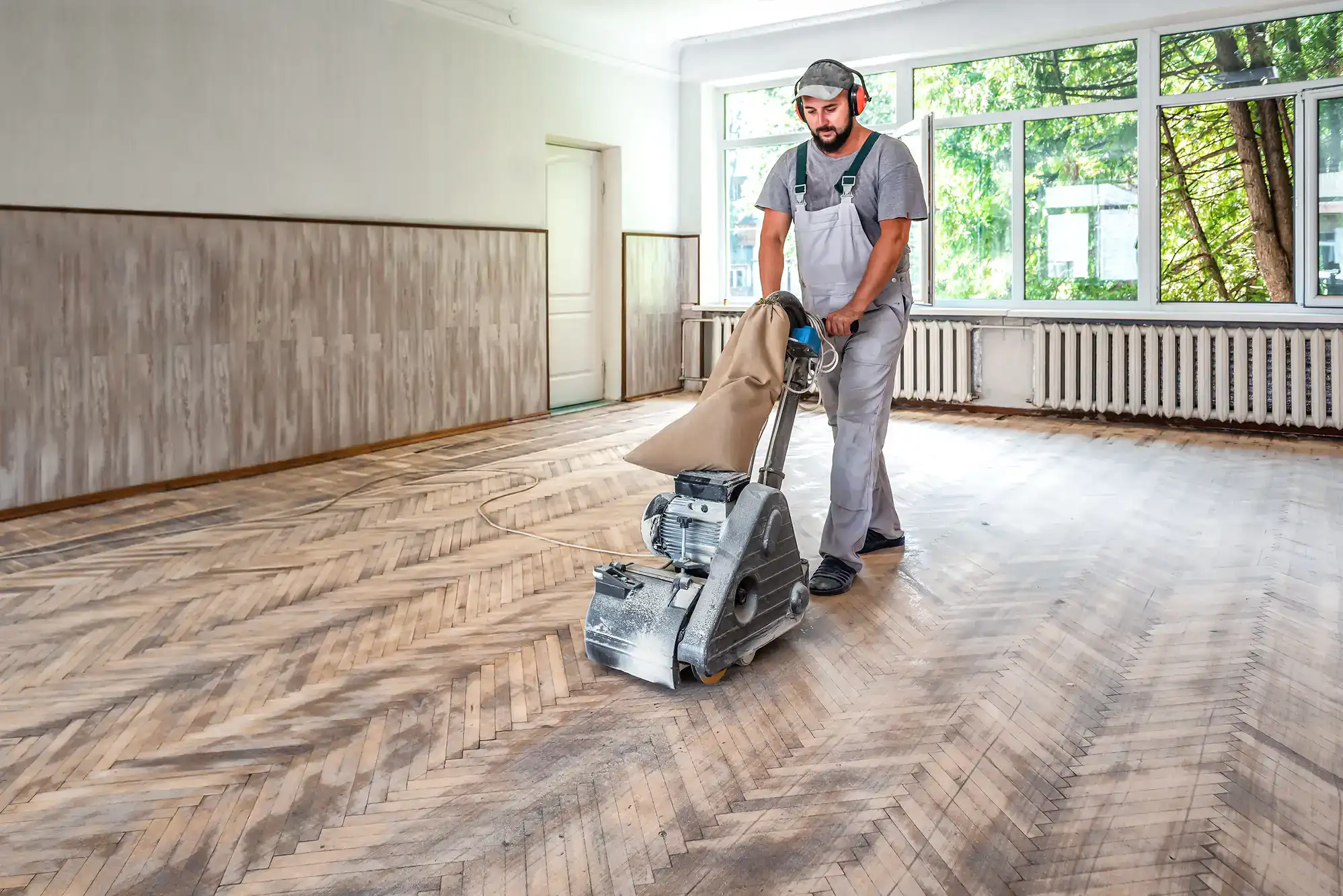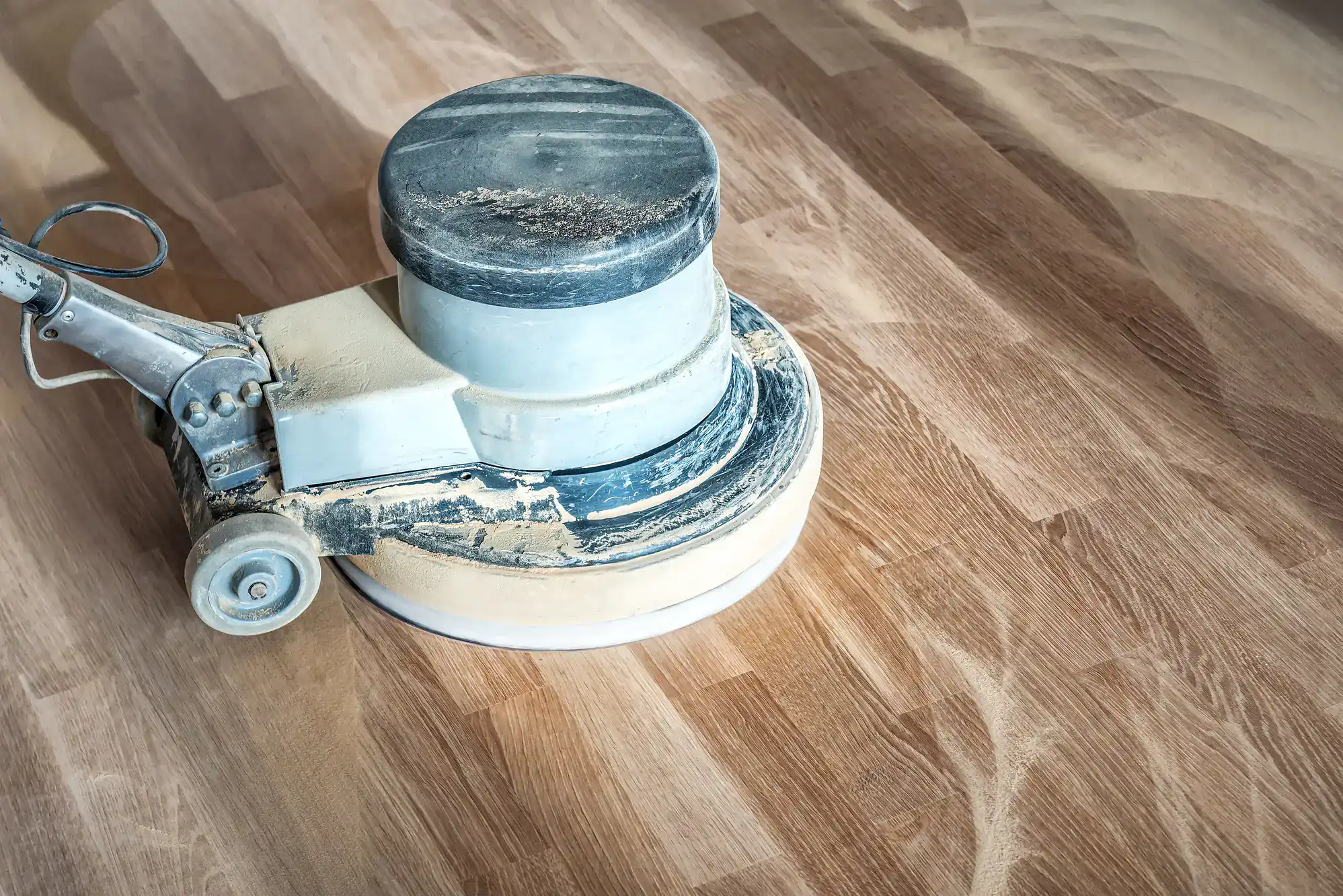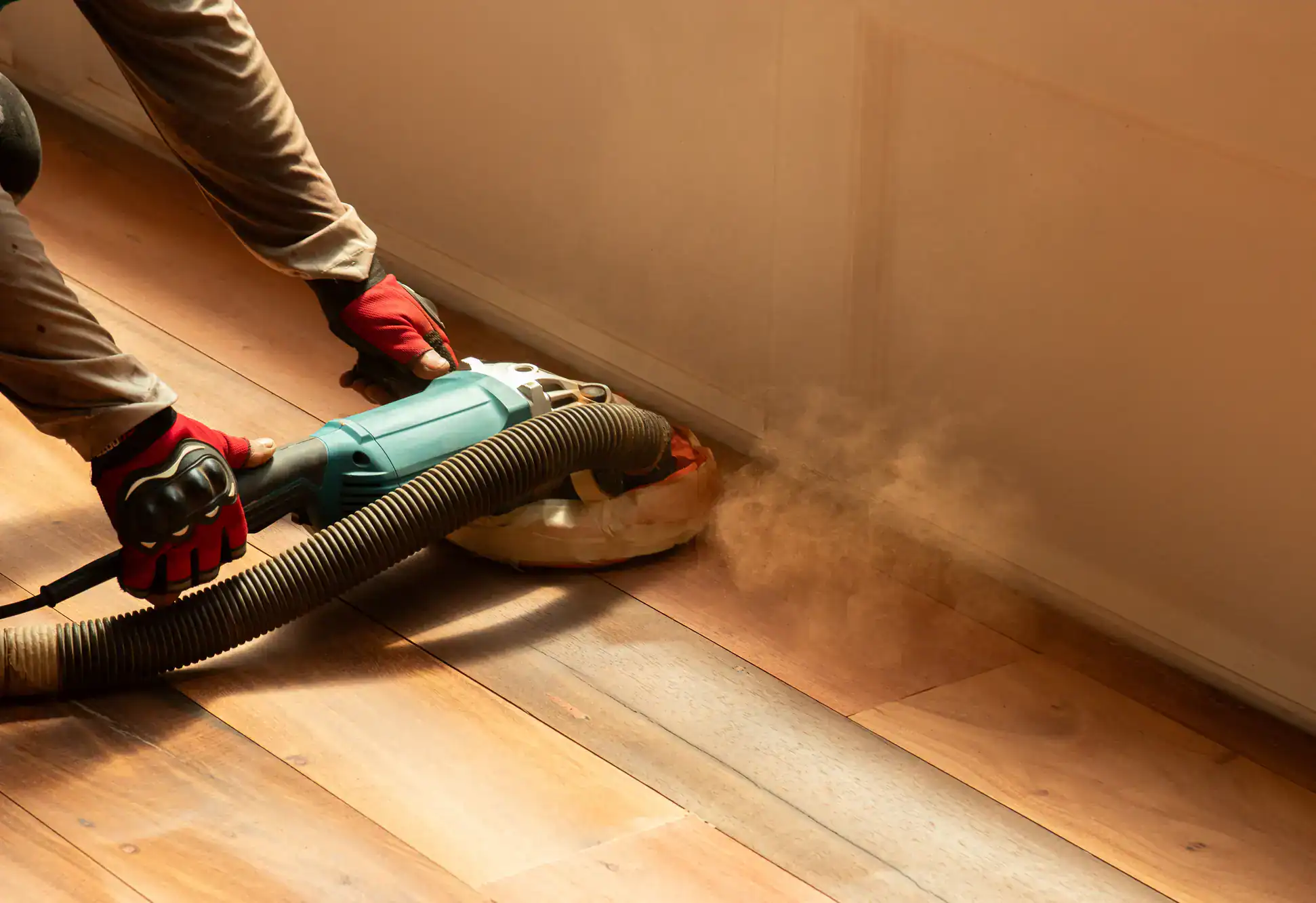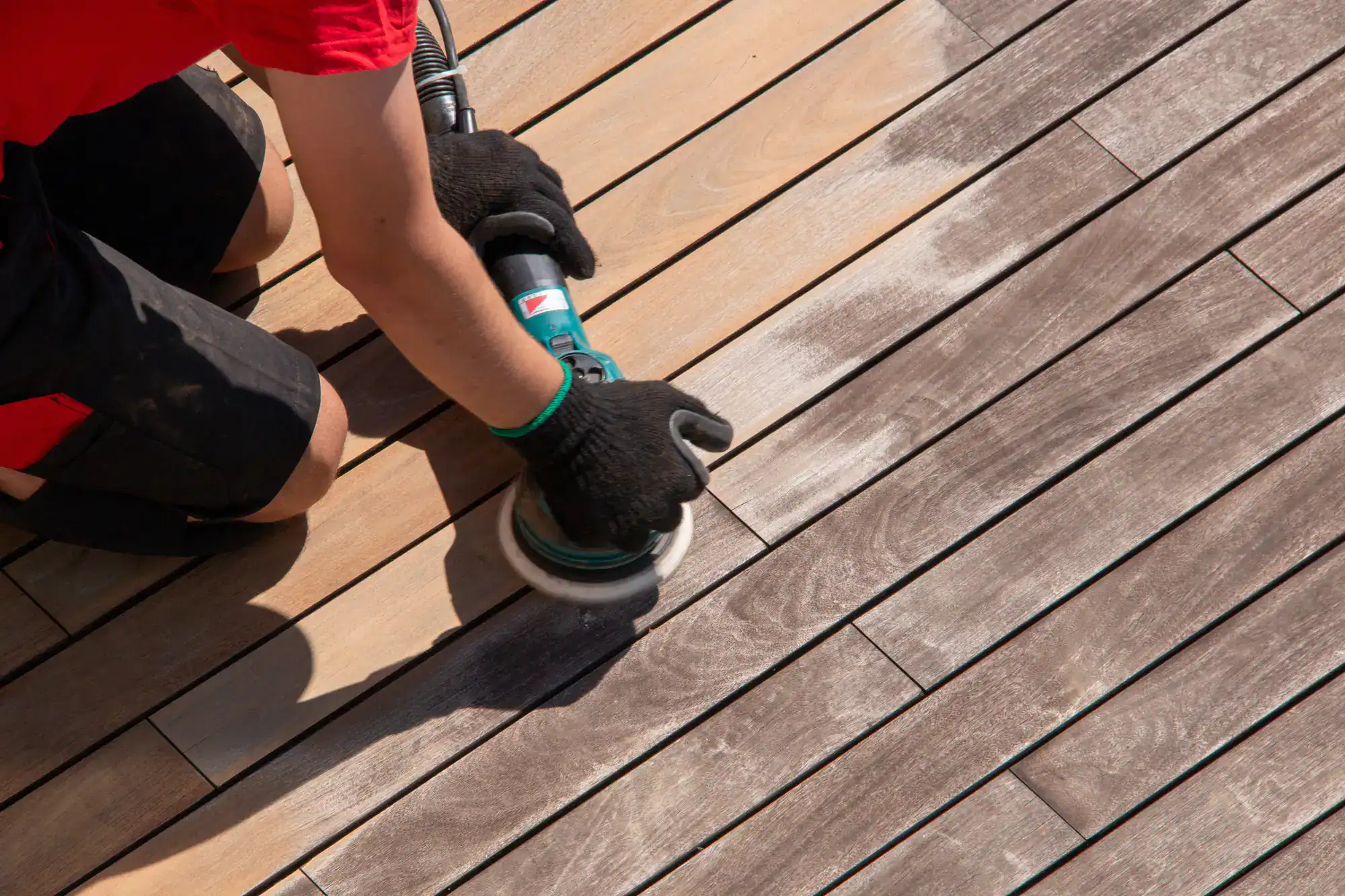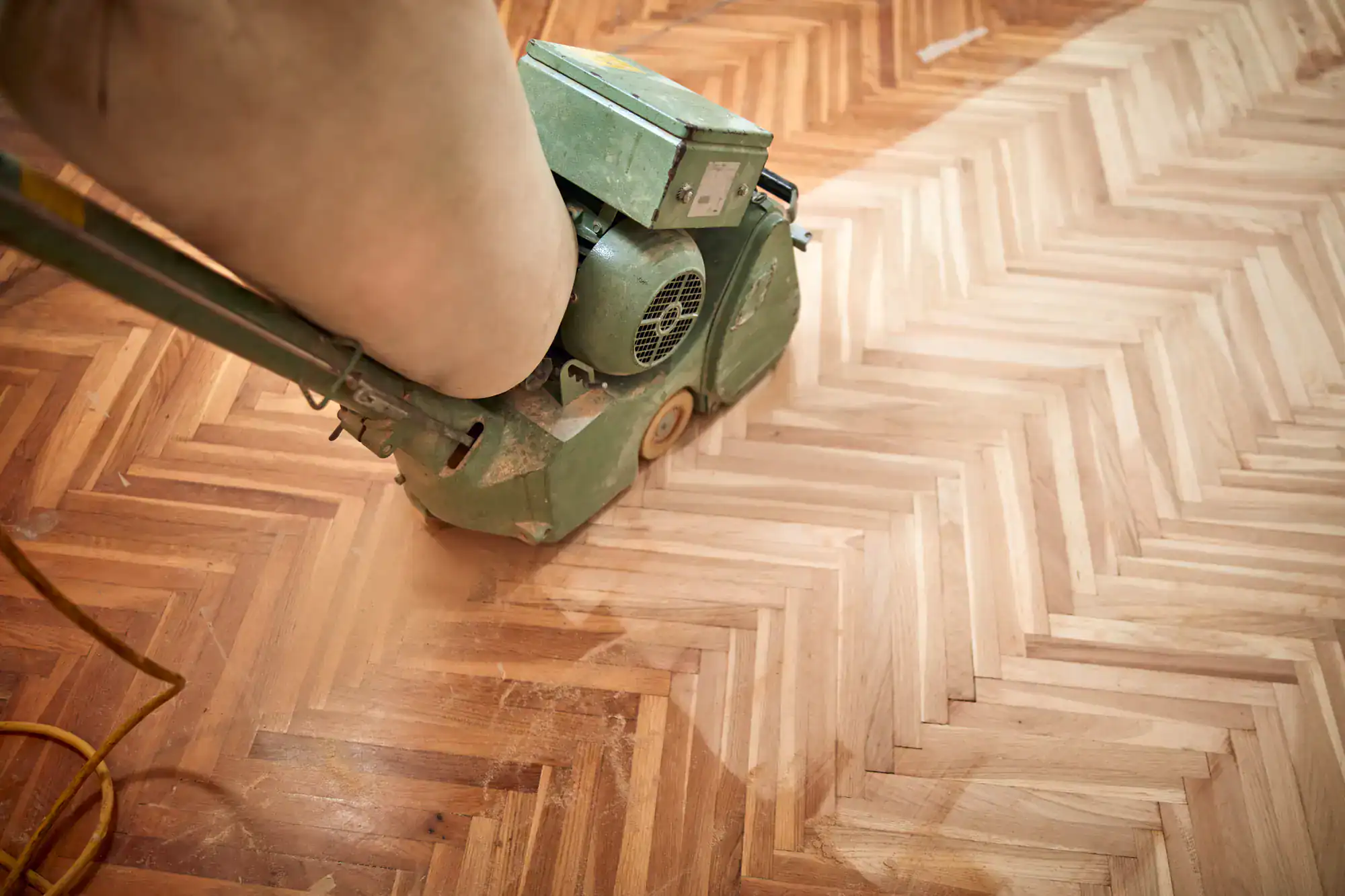If you can see the wood grain clearly and the floors just look dull or have minor surface scratches, professional cleaning and screening might be enough. But if you see deep scratches, worn areas where the finish is completely gone, or water stains that have penetrated the wood, you’ll need sanding.
Another test is to put a small drop of water on the floor. If it beads up, the finish is still intact. If it soaks in, the finish has worn through and sanding is needed to properly protect the wood.
When in doubt, a professional assessment can determine the best approach. Sometimes what looks like it needs complete sanding can actually be restored with less invasive methods, saving you time and money while still getting great results.
